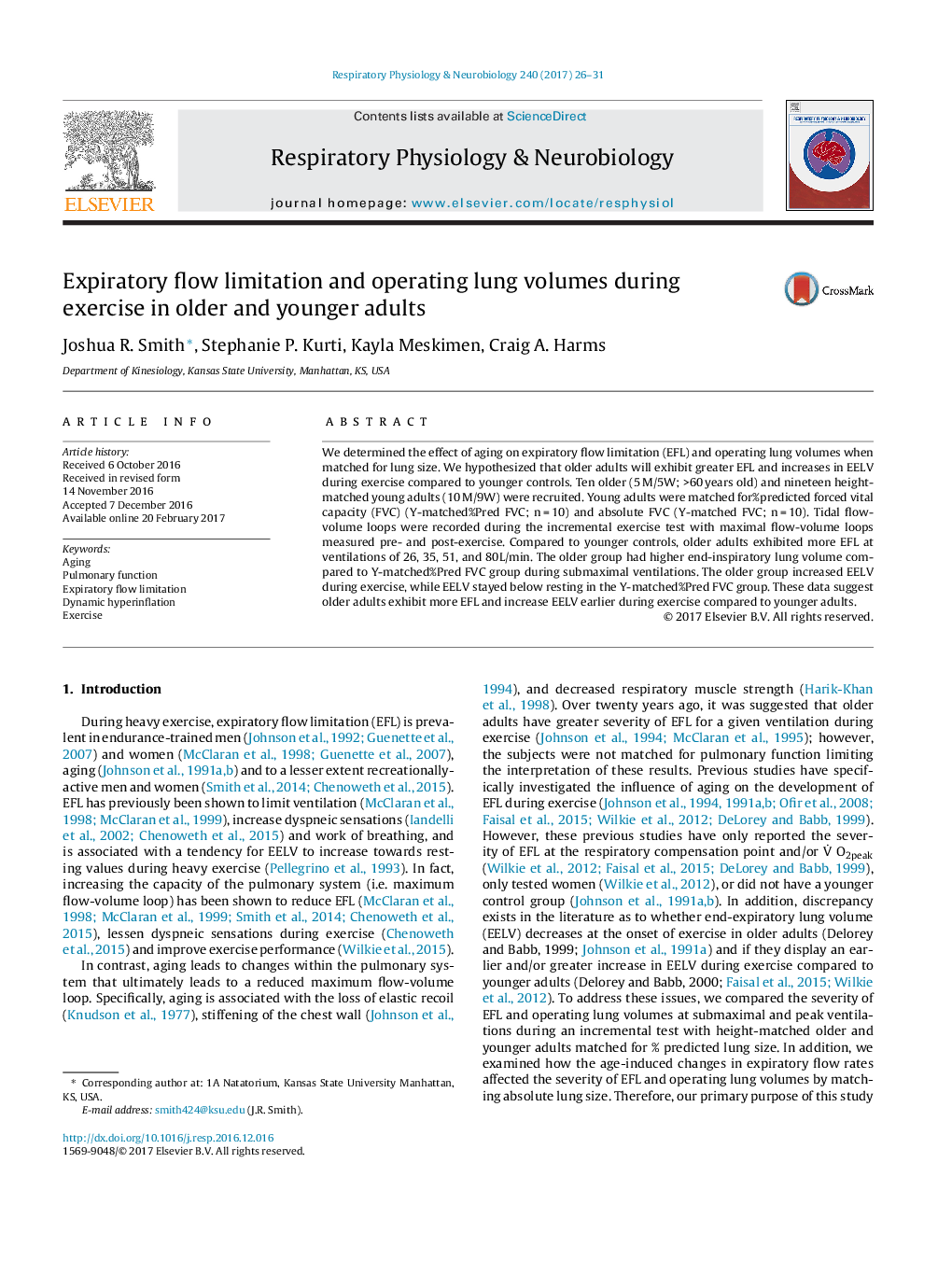| Article ID | Journal | Published Year | Pages | File Type |
|---|---|---|---|---|
| 5594080 | Respiratory Physiology & Neurobiology | 2017 | 6 Pages |
Abstract
We determined the effect of aging on expiratory flow limitation (EFL) and operating lung volumes when matched for lung size. We hypothesized that older adults will exhibit greater EFL and increases in EELV during exercise compared to younger controls. Ten older (5 M/5W; >60 years old) and nineteen height-matched young adults (10 M/9W) were recruited. Young adults were matched for%predicted forced vital capacity (FVC) (Y-matched%Pred FVC; n = 10) and absolute FVC (Y-matched FVC; n = 10). Tidal flow-volume loops were recorded during the incremental exercise test with maximal flow-volume loops measured pre- and post-exercise. Compared to younger controls, older adults exhibited more EFL at ventilations of 26, 35, 51, and 80L/min. The older group had higher end-inspiratory lung volume compared to Y-matched%Pred FVC group during submaximal ventilations. The older group increased EELV during exercise, while EELV stayed below resting in the Y-matched%Pred FVC group. These data suggest older adults exhibit more EFL and increase EELV earlier during exercise compared to younger adults.
Related Topics
Life Sciences
Biochemistry, Genetics and Molecular Biology
Physiology
Authors
Joshua R. Smith, Stephanie P. Kurti, Kayla Meskimen, Craig A. Harms,
